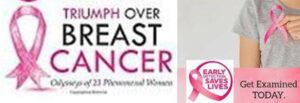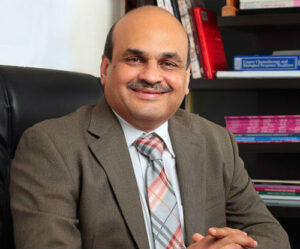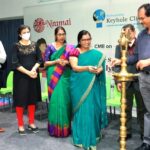Breast Cancer in women is the most common cancer . Dr. CB Koppiker, Breast onco-surgeon and medical director at Orchids Breast Health Center, Pune, debunks various myths related to the condition and its management.


The most common cancer amongs’t women, breast cancer covers 25% of all cancer burden, globally as well as in India. With alarming rise in its incidence in the country, predominantly in urban India, estimates suggest every four minutes an Indian woman is diagnosed with breast cancer and every 13 mins a woman dies due to the condition. According to a recent report by WHO and International Agency for Research on Cancer (IARC), India saw 162,468 women newly detected with breast cancer and 87,090 losing their lives to the disease in 2018.
While genetic predisposition, sedentary lifestyle, longer working hours, late pregnancy, smoking, excessive alcohol consumption, stress and obesity are some of the risk factors associated with breast cancer. Medical experts believe delayed diagnosis and lack of awareness are major reasons for its high mortality rates. Most women do not know enough about breast cancer to get themselves diagnosed early.
Various myths related to Breast cancer and its management:
Myth 1: Breast cancer usually happens in older women and those with family history
It is true that elderly women may be at a higher risk for developing breast cancer,but it can occur in younger population as well. We have been witnessing a surge in breast cancer cases amongs’t women in the age group of 25-49 years in India.While genetic predisposition is a prominent risk factor, it is not the only one. Lifestyle and environment factors too could be at play. Hence, it is important for women for all ages to pay attention to their breasts and regularly examine them. Timely diagnosis and treatment at early stages of breast cancer can go a long way in improving the survival rates.
Myth 2: Leading an active and healthy lifestyle will keep breast cancer at bay
Yes, staying active and eating nutritious food is helpful to keep the body healthy and to lower risk of various disease conditions including breast cancer but it can’t eliminate it. It is critical to watch out for warning signs such as lump in the breast or underarm, thickening or swelling in the breast, pain and redness in the nipple areas, dimples or bulges on the breast skin and nipple discharge. If you notice any unusual changes, it is recommended to consult a doctor. A self-examination of the breast, regular screening with mammography, ultrasound is beneficial for early detection of the cancer.
Myth 3: Lumps around breast indicates breast cancer
No, a lump or lumps in the breast area doesn’t necessarily mean its cancer. Lumps can be formed due to various reasons including infection, inflammation, hormonal changes, trauma, tumor, etc. Breast cancer might or might not cause a lump. So, if you discover a new breast lump do not ignore the change or panic, instead get it checked by a doctor. Annual clinical breast exam and mammography is recommended for those above 30 years of age.
Myth 4: Treatment for breast cancer is same for all
Management of breast cancer depends on the severity/stage of the disease and the patient’s preference.In breast cancer, information about whether the cancer has spread from primary tumor location to other locations is very critical. During the minimally invasive biopsy, technological advancements like fluorescence imaging enables surgeons to selectively remove the lymph nodes and improve clinical accuracy of cancer staging. Enhanced precision and selected removal help avoid post-op complications like lymphedema, sensory deficit, pain, and impaired arm movement. Treating breast cancer may involve surgery, chemotherapy, radiation, and hormone therapy.
Myth 5:Breast cancer means removal of the entire breast
A radical mastectomy or surgical removal of the entire breast is suggested only when the cancer has spread extensively to the chest muscles. For each patient, the course of treatment varies per the cancer stage and his/her condition. With surgical advances breast conservation surgeries are a norm today. During a skin/nipple sparring surgery, surgeons remove only the cancer-affected breast tissues/tumour and re-construct the breast. Fluorescence Imaging helps surgeons to assess the vascularity of the skin flaps during surgery allowing them to ensure that the skin or the nipple areolar flap that are left behind after nipple sparring mastectomy are safe enough for reconstruction.
References:
- https://www.forbesindia.com/article/weschool/why-breast-cancer-awareness-needs-better-marketing-in-india/63939/1
- https://www.breastcancerindia.net/statistics/latest_statistics_breast_cancer_india.html
- https://www.who.int/cancer/PRGlobocanFinal.pdf


Dr. CB Koppiker
Breast Onco-surgeon and Medical Director
Orchids Breast Health Center, Pune











